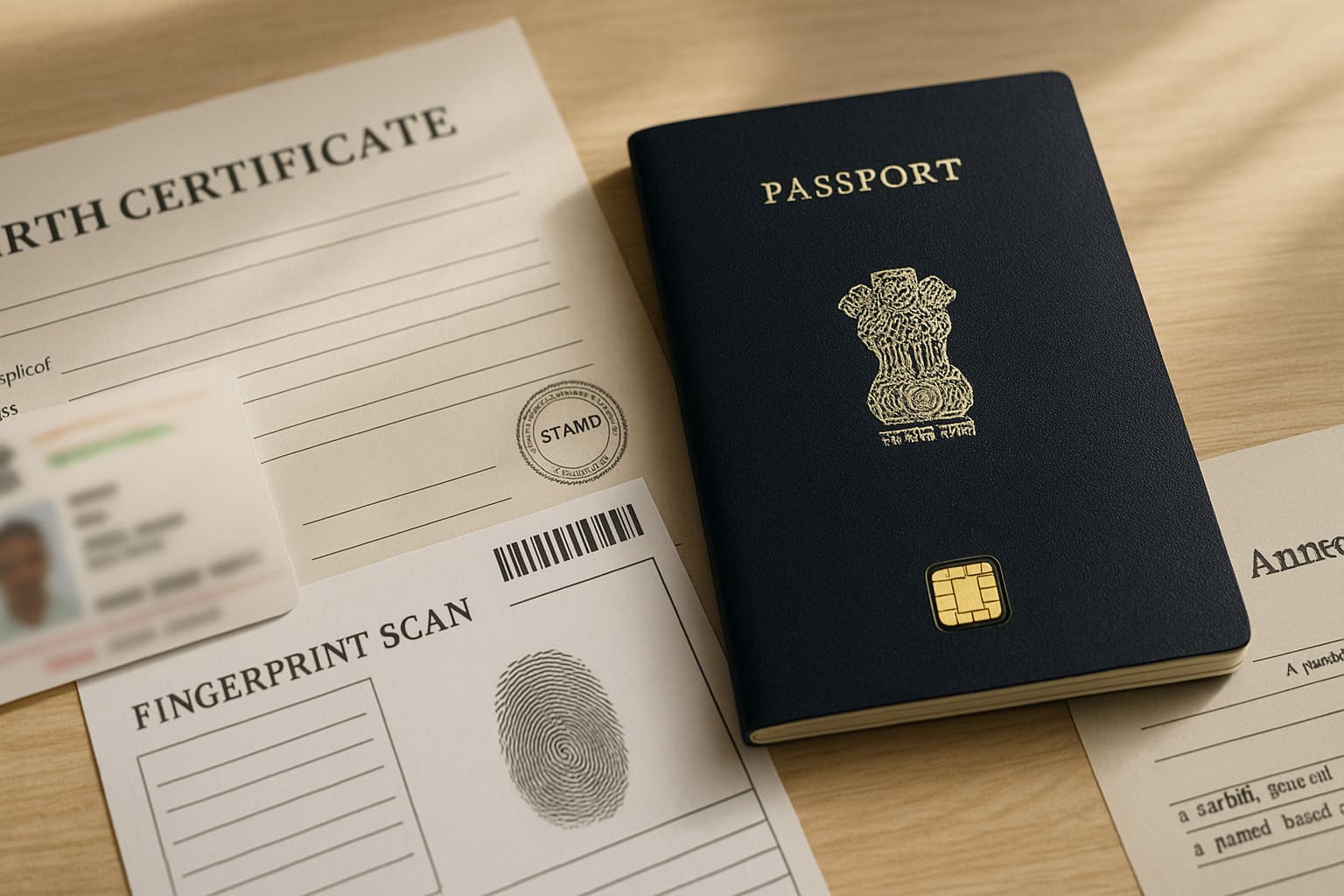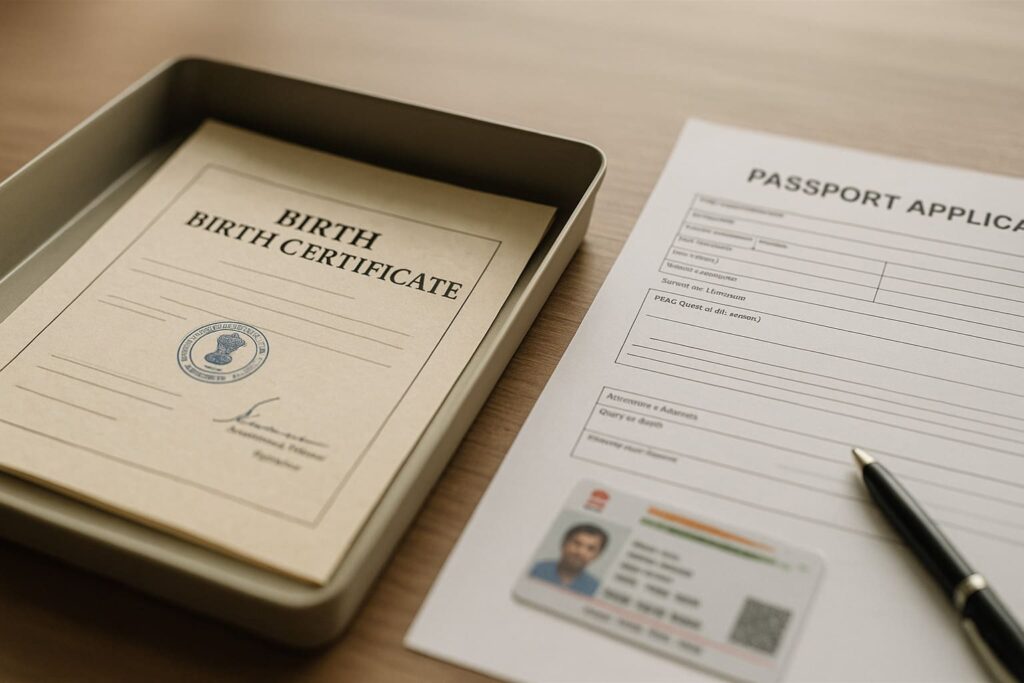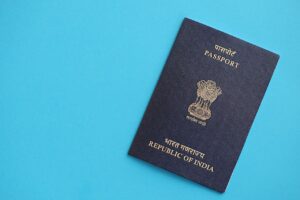
Indian passport rules have changed from 2025. If you are planning to apply now, or renew your old one, there are new things you must follow. The changes are direct, and if you skip them, your file may stay on hold.
Birth certificate is now mandatory for all first-time applicants. The e-passport rollout has started, with a new chip that holds your biometric data. Some personal details like parents’ names or full address may no longer be printed in the passport booklet. This is part of the passport data privacy update under the new MEA guidelines.
You will also see faster verification in many cities, as CCTNS police checks are now linked with Passport Seva Kendra (PSK) systems. The rules are also different now for Annexures, especially for Tatkal and minor applicants.
This post explains each update—passport rule change, address barcode logic, and new steps for both normal and Tatkal applications.

Need Expert Help on Your Passport Application?
Our passport agents handle forms, documents, and just one call away..
Introduction of Biometric e-Passports
The biometric e-passport is not just a design upgrade. It is a secure smart card with an electronic chip that stores your face, fingerprint, and iris details. From 2025, it will slowly replace the traditional booklet format in phases.
These e-passports follow ICAO global security standards. Immigration officers can scan the chip in seconds. This speeds up checks at international airports and lowers fraud risk. It also limits physical tampering since data is digitally locked.
Main Benefits:
- Faster airport entry and exit with chip scanning
- Tougher protection against forgery
- Smarter tracking by global authorities
The MEA has started issuing e-passports in select cities like Delhi, Bengaluru, and Chandigarh. Expansion will continue based on chip availability and equipment setup at PSKs.
How to Apply:
- Choose “e-passport” option while filling online form
- Book slot at a PSK that supports biometric setup
- Carry Aadhaar, old passport, and photo ID
- Chip is auto-coded during final print stage
These new passports will still have a normal cover but contain biometric chip data inside the back page. If your city is not listed yet, your current passport will stay valid till expiry.
Mandatory Birth Certificate for Applicants Born After October 1, 2023
If you were born after 1 October 2023, the birth certificate is now compulsory. No Aadhaar. No school ID. No affidavit. PSKs across India have updated their system checks. If you upload anything else, the portal marks the file incomplete.
For applicants born before October 2023, alternate proofs may still work — like PAN card, 10th marksheet, or service book. But always cross-check the latest rules on passportindia.gov.in.
Always use a scanned copy in PDF format showing the name, DOB, issuing authority seal, and registration number. If you live in a village, ensure your Panchayat office gives the updated digital version, not a handwritten one.
| Requirement | Before 2025 | From 2025 Onwards |
| Date of Birth Proof | Multiple options allowed | Only birth certificate accepted |
| Aadhaar or PAN as DOB proof | Permitted in many cases | Not valid if born after 01-10-2023 |
| School leaving certificate | Accepted previously | No longer valid for new applicants |
| Accepted issuing bodies | Loose enforcement | Strict: Municipal body, Gram Panchayat, CHC |
| Births outside India | Special consulate rules | Must match embassy or high commission records |
| Document format | Any clear PDF accepted | Must be signed, stamped, and dated |
Removal of Parents Name from Passport
From 2025, Indian passports will not show mother or father name on the ID page. The Ministry of External Affairs made this change to fix many real problems.
Many applicants do not live with both parents. Some are raised by a single mother. Some have no contact with their father. In such cases, the old rule created delays. Forms did not match. Names caused confusion. People had to explain their private family life again and again.
The new passport format now shows only your personal details. Your name. Your photo. Your date of birth. No parental name is printed.
In the backend, the system still checks your background. Police verification still uses full form details. But your printed passport will not include any parent section.
What This Change Means for You
- No parent documents needed for most applicants
- No printed parent name even for minors
- Smooth process for adopted, orphan, or single-parent cases
- Better privacy and no mismatch issues during police check
- Matches global passport rules used in Canada and Europe
This rule is already active for new passports and reissues from 2025. It supports privacy, passport data clarity, and makes the process fair for every citizen, no matter their background.
Residential Address Details Embedded in Barcode
In 2025, the Ministry of External Affairs (MEA) implemented a significant change to enhance the privacy and security of passport holders. The residential address, previously printed on the last page of Indian passports, is now stored digitally within a scannable barcode.
What Changed and Why It Matters
- Your address is still required during application, but it is not printed anymore
- Barcode stores address data, keeping your identity private in public use
- Only immigration and police officials with secure scanners can read it
- Global standard update — like passports in EU and USA
What You Should Know as an Applicant
You must still give proper proof of address during the process — like Aadhaar or utility bill — but it will stay digital.
You will no longer see your flat number, street name or pin code printed in the booklet. This is good. It protects you from misuse in case you lose the passport or hand it over somewhere.
No change is needed from your side. The barcode gets printed automatically by the Passport Seva system once your details are approved.
New Color-Coded Indian Passports: What Each Color Means Now
India has now added color codes to passports — not for design, but for purpose. From 2025, the outer cover of the passport tells officials what type of document it is, even before scanning. This helps speed checks at airports, embassies, and PSKs.
Here is how the new classification works:
| Passport Type | Cover Color | Who Gets It |
| Ordinary Passport | Blue | For general public (new or renewal) |
| Official Passport | White | For government officers on official trips |
| Diplomatic Passport | Red | For ambassadors, envoys, high-level officials |
| Emergency Travel Document | Grey | For Indians stranded abroad (case-by-case) |
Why This Change Was Needed
Earlier, all passports looked almost the same unless you read the text line by line. That caused delays in identification. Now, at airports and immigration desks, color tells the story. It speeds up the queue, reduces manual handling, and brings India closer to global passport standards used in countries like Germany and Singapore.
For most citizens, the passport stays blue — no action needed. The new rules only reclassify the outer design for faster processing. All details inside remain the same.
Online Police Verification Process
Till a few years back, police verification for passports meant delays. A file from the Passport Seva Kendra went manually to the local police station. Someone had to pick it up, call you, and fill it out on paper. Many got stuck right there.
In 2025, this process is now fully online. The Ministry of External Affairs has connected the passport system with the CCTNS database used by Indian police. So when your application goes from PSK, it reaches the right officer via a secure digital route. No files get misplaced. No physical backlogs.
What This Digital Shift Changes for You:
- Faster police report — no waiting for a field visit in every case
- Auto-allocation of your file to the right local officer
- Instant update from police server to RPO system
- Less risk of manual hold due to document mismatch
- Seamless tracking of your status inside the Passport Seva Portal
If your address is valid, the phone is reachable, and the police record is clear, your verification can be done within 1 to 3 days. Even physical visits, if assigned, are now auto-logged — and reports are updated live.
This new online flow has reduced backlogs in cities like Delhi, Noida, Lucknow, Pune, and Bangalore. It also means fewer applicants are told their file is on hold for police response.
Simplification of Documentation Requirements
Getting a passport once meant endless annexures, certified documents, and standing in queues for notarisation. But from 2025, the Ministry of External Affairs has officially reduced these burdens. You now need fewer annexures, and for most people, no attestation at all.
What Changed in Annexure Rules:
Earlier, even basic changes like a name update or marital status needed a signed Annexure A or K from a gazetted officer. Now, in most regular cases, a self-declaration on plain paper works. This change helps students, newly married couples, divorced applicants, and senior citizens apply faster without confusion.
What You No Longer Need:
- No attestation required for most documents
- Annexure F only when applying under Tatkal with employer verification
- No more notary signatures for name change in marriage
- Divorcees can declare status without submitting decree in many cases
This shift is not just about convenience. It reduces document fraud, cuts dependency on third-party approvals, and makes passport access equal for all citizens, no matter their background or status.
Note: Some sensitive cases like Tatkal or international travel for minors may still need official paperwork—but the rule now follows a minimal requirement principle.

How These Changes Affect New Passport Applicants and Renewals
The 2025 passport updates are not cosmetic—they deeply change how first-time applicants and renewal cases are handled at every step.
For New Applicants
If you are applying for the first time, be ready for a simpler but stricter checklist. Only a birth certificate is accepted as date of birth proof if you are born after October 1, 2023. Police verification is now mostly online, but if your address was updated recently or you live in rented space, it might still need a manual visit.
The passport booklet will not show your parents’ names or printed residential address. Only your identity will be visible, with all other data stored digitally.
For Renewals
If you already have a passport and are applying for a reissue or renewal, most documents will carry forward. You will not need to resubmit old annexures. The form is simpler. You will not see your parents’ names on the new booklet, and if your old passport had an address mismatch, it will now be handled using barcode storage.
You should still check your police record history before opting for Tatkal renewal, especially in cities like Delhi NCR where files get flagged easily.
What You Must Prepare For:
- Submit birth certificate if DOB is after Oct 2023
- Ensure address proof is clear and recent
- Confirm if old police verification has any pending flag
- Use only updated Annexures if required
- Book appointment at correct PSK/POPSK jurisdiction
This new structure reduces friction for most but also adds a layer of smart system filtering—so honest applicants sail through, but any mismatch can delay processing.
Still Confused About the Process? Talk to a Passport Agent Today
Conclusion
From 2025, Indian passport rules are changing across the board. Each update is focused on better privacy, stronger security, and faster processing. Whether it is removing the printed address, dropping parents names, or adding biometric chips, the system is shifting to meet global standards.
If you are applying for a new passport, the process is more focused but also simpler. If you are renewing, you may need fewer papers but must give the right details. These rules apply across India and are active in all major cities, including Delhi NCR.
To avoid delays, always check the latest rules on the official Passport Seva website. If you feel confused, ask a verified passport agent who understands these changes well.
When your file is clear, your passport moves fast. Just stay updated and follow the correct steps.
 Passport Guide
Passport Guide

